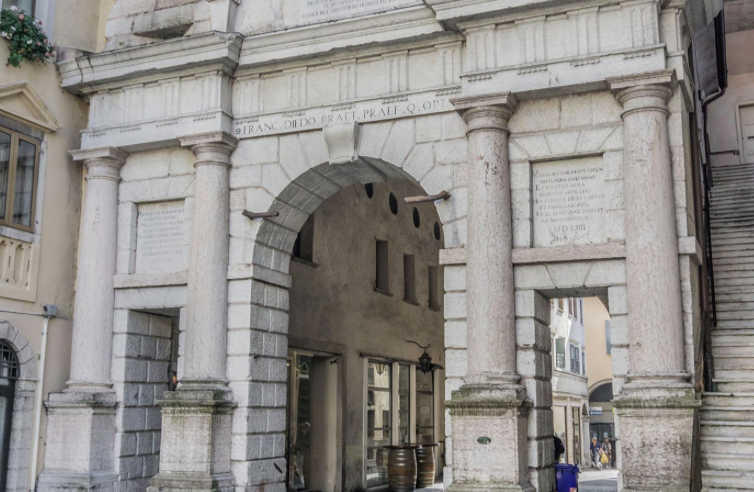Porta Dojona (Dojona Gate) is one of the most distinctive symbols of the city of Belluno. It has seen nearly one thousand years of Bellunese history, endured several restorations, been expanded and covered. But what you might not know is this gate hides a small secret of daily life. Read on to learn more.
Porta Dojona is one of the five gates (four official and one “for emergencies”) that allows you to enter inside the city walls of Belluno, and is one of three that is still intact today.
We are talking about a real monument, one that is a testament to the history of Belluno since 1289: the year in which its internal archway was erected, originally called “di Foro” (public square) or “Mercato” (market), designed by Vecello da Cusighe and in honor of the count-bishop Adalgerlo of the 8th level.
The second part of the gate, as in the actual “facade” that overlooks Vittorio Emanuele Square, dates back to the Renaissance period, specifically 1553: it is the work of Niccolò Tagliapietra, built on request for chancellor Francesco Diedo (note the inscription above the arch FRANC. DIEDO. PRAET. PRAEF.Q. OPT). You can even see various recognizable Renaissance-style elements, such as the columns positioned on high pedestals, the triglyphs carved in the architrave and the two caryatids aside the Lion of San Marco.
One of the principal features of this evocative place of the city is the world that one enters by passing under the gate: you must however know that it has not always been this way. In reality, the passageway was first covered in 1622, thus giving Porta Dojona its characteristic feeling of a “small-scale arcade.”
Moreover, not even the name is the same as it was at the beginning: the gate was named “Dojona” in 1609 in honor of Giorgio Doglioni, aid to prince-bishop of Bressanone.
Have you ever heard someone refer to this gate as “Porta de la Cadene“? If that happened and you wanted to ask why, we’ll tell you: it takes this name from the drawbridge that was here until c. 1730 (when the moat was buried) from Via Mezzaterra.
But now we arrive at that which we had promised, the virtually hidden quirk of this gate: we have explained that this gate is a symbol of the city unto itself, in particular its walls, the inscriptions written mostly in Latin that recall the construction of the gate, its successive restoration projects and even the happenings of the city of Belluno. But there are also inscriptions less renowned and uncommon, which recount episodes of daily life.
Let us explain further. In the points shown using the arrows in the following image, if you look closely (we mean in person, if not, what beauty is there?), you can see written the names of people and their dates. Know who these people are? These are the autographs inscribed by the guards who protected this gate in the middle of the 1800s. And do you know how they left their permanent mark on the Porta Dojona? They did it with their bayonets.

Photograph by Leonard Leo Graf.
Thanks to the group Belluno e Provincia: cultura arte e storia that shared some of the information present in this article and to the research of Gigetto De Bortoli, Andrea Moro, Flavio Vizzutti, Belluno: storia, architettura, arte Belluno, 1984.


